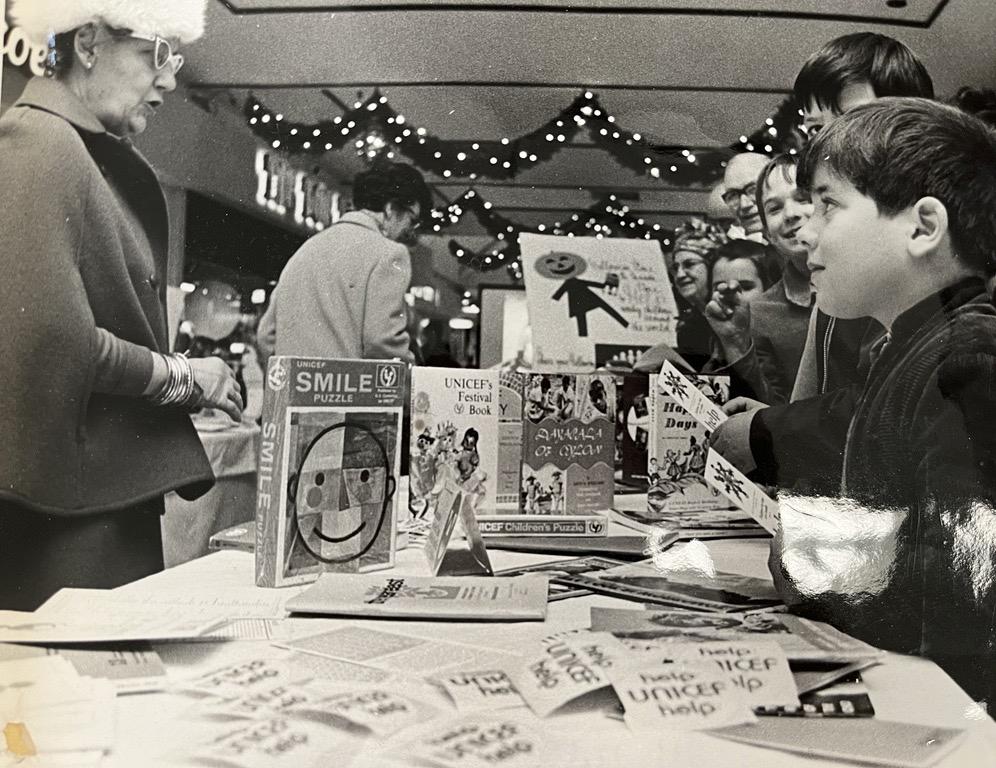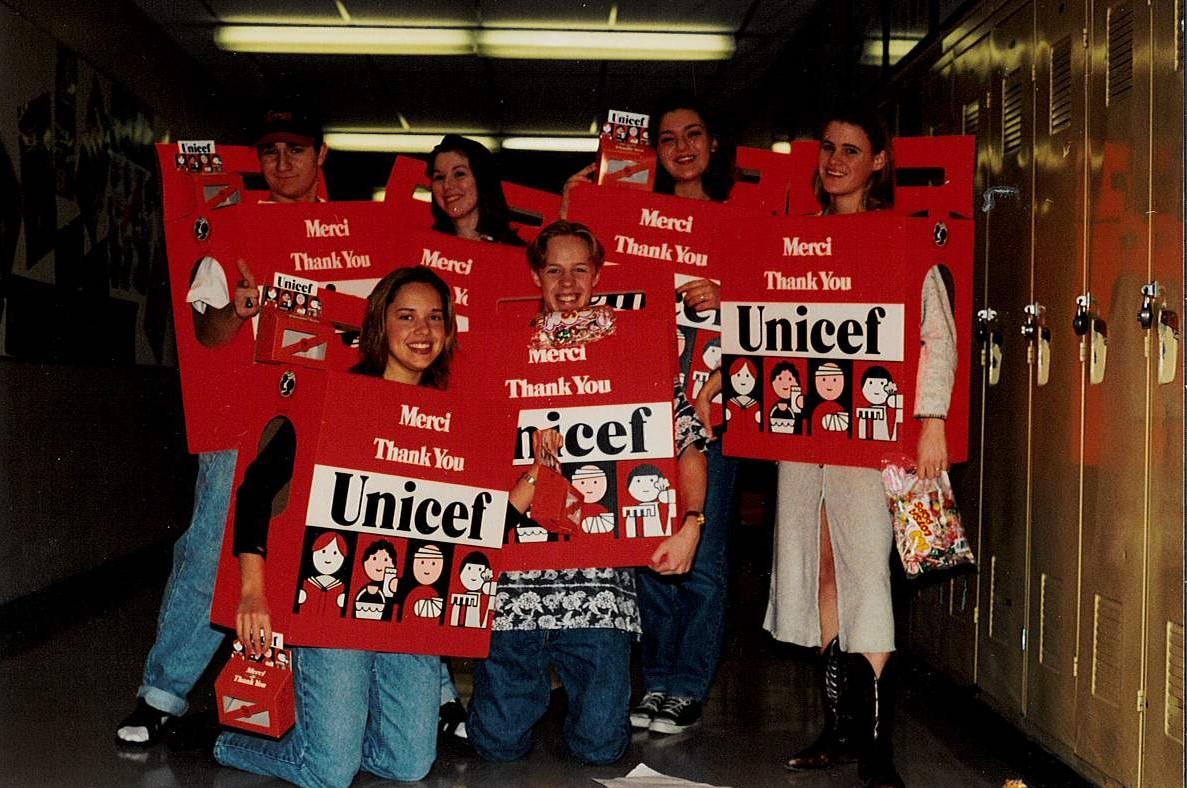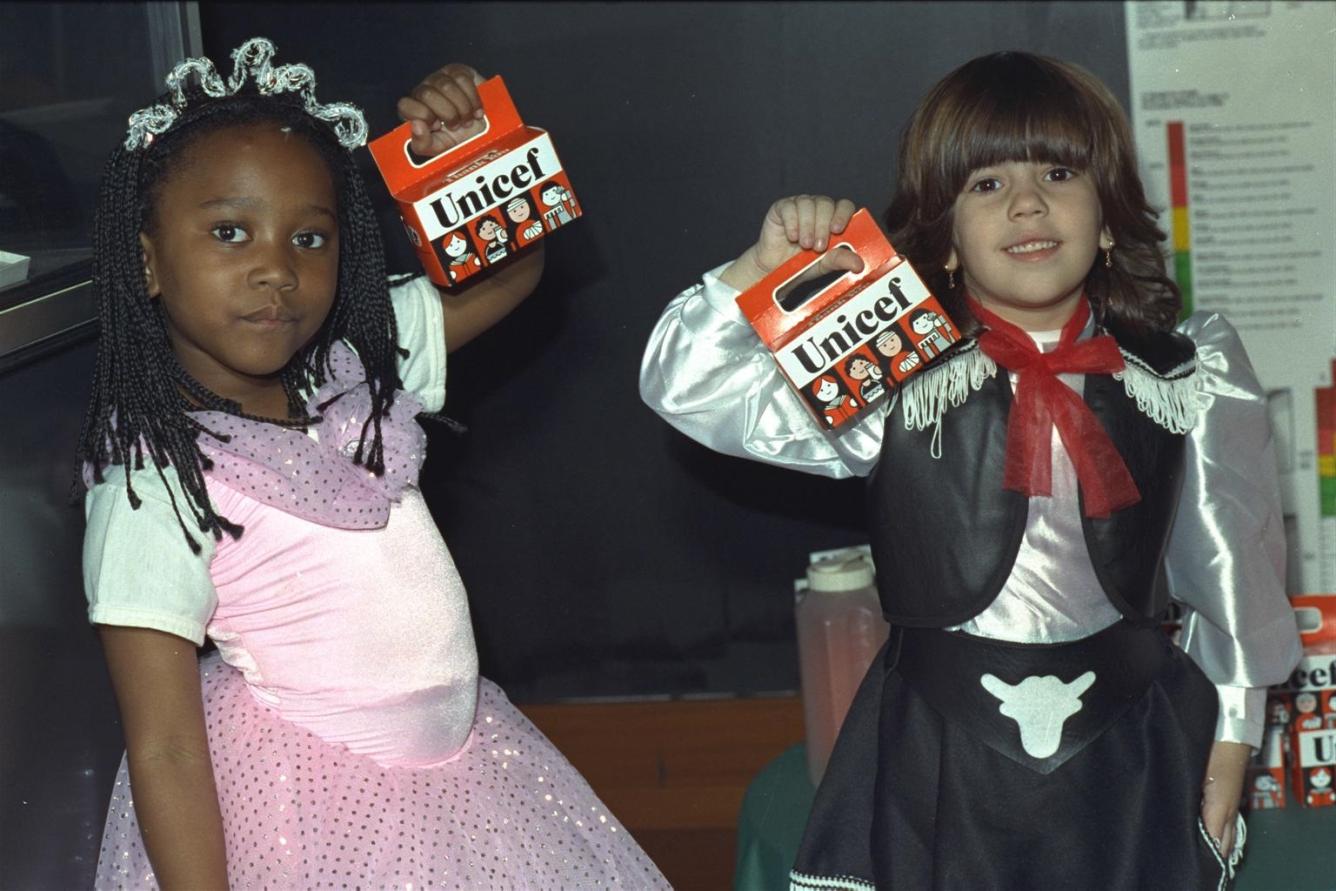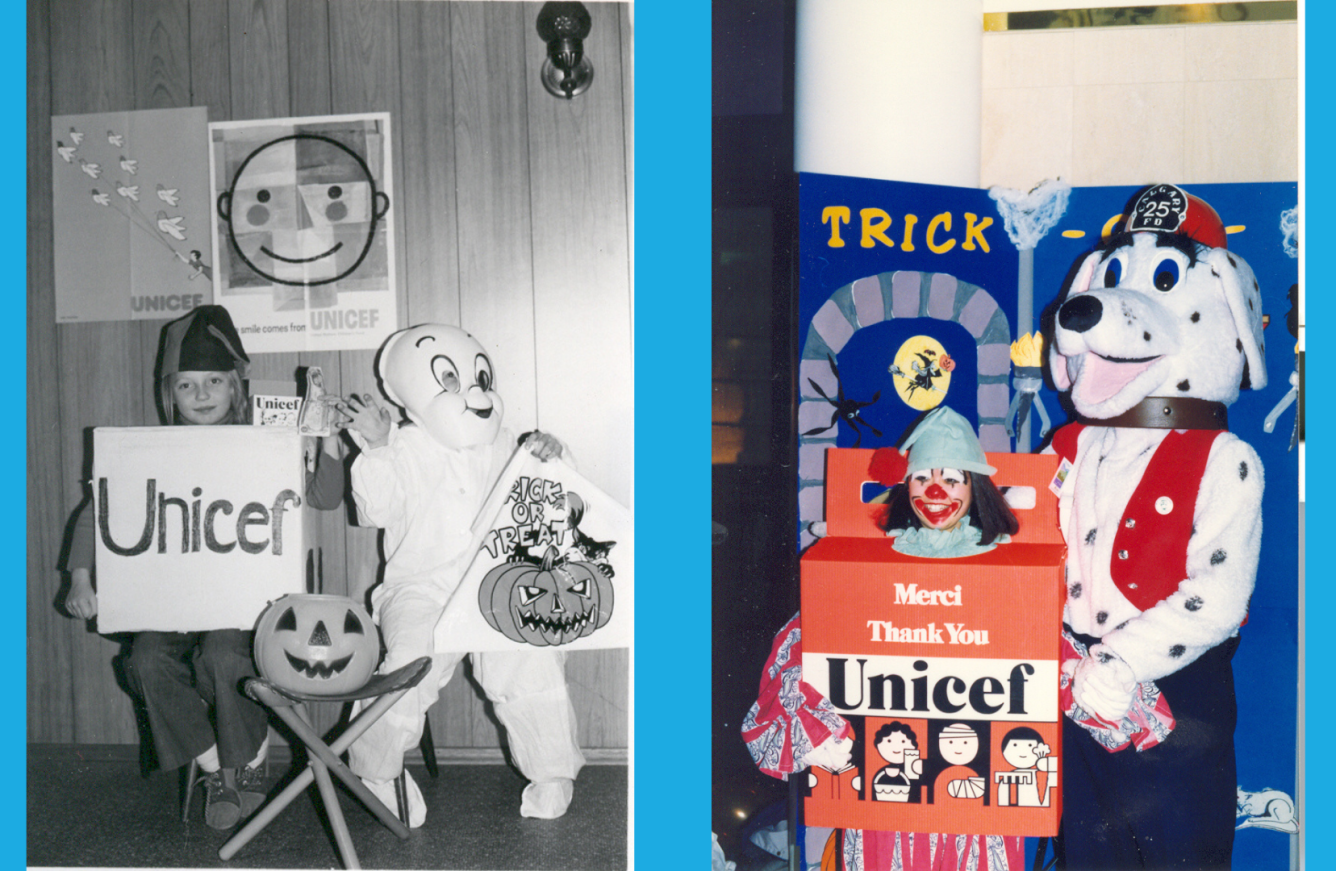UNICEF’s Halloween Orange Box: A child’s first foray into philanthropy

Mention Halloween to anyone in Canada and they’ll likely think of UNICEF’s orange box. For decades UNICEF’s Trick or Treat for Halloween program would see tens of thousands of children descend onto leaf-lined streets with bright orange boxes in hand on a mission to collect candy – and pennies, dimes, quarters and loonies.
In fact, it was the orange box that propelled the opening of a UNICEF office in Canada. As the story goes, in 1950, a minister in Pennsylvania, Clyde Allison, his wife, Mary Emma, and their kids started asking for coins, as well as candy, when trick-or-treating, to send to children in Europe who’d been impacted by World War II.
In 1952, news of this new movement had spread to Canada, and Canadian families also began collecting coins on Halloween and mailing them to the UNICEF USA fund. The interest was so strong that in 1955, UNICEF opened UNICEF Canada, to help Canadians organize and fundraise on Halloween.
Beyond the orange box: Global citizenship and engaging communities

“It was so much more than the box, it was also about kids having their first experience in philanthropy, and truly understanding the impact of giving on the world,” says Cathy Memah who led the Trick or Treat program in Ontario.
And a large part of this was the educational aspect of the program, she says. UNICEF would develop and share teacher’s guides linked to the curriculum so that teachers could talk to their classes about child’s rights, the needs of children around the world, and the work UNICEF did for them.
“It taught students how to be global citizens,” says Holly Davidson, who led the program for Alberta and the Northwest Territories, on how the education guides would integrate children’s issues and global challenges into what the students were learning.
And it meant a lot for the teachers and students, says Memah, who recalls a year when there was a teacher’s strike in Ontario yet teachers were handing out the orange box from behind the picket line.
It wasn’t just teachers who were enthusiastic about the program. Many people from the community made the Trick or Treat program possible – where at its peak almost a million boxes were sent out across the country.

“It was special because it engaged communities,” says Davidson. “It wasn’t just a small group raising funds alone, there was big community involvement.” From students to parents to teachers, then volunteers including seniors who would count the coins, to corporations that served as pick up centres for the boxes.
At one point Memah said she was handling over 50 committees in Ontario to help run the program. “Calling the schools, delivering supplies, rolling the coins, loading them up in their cars,” it was the enthusiasm of the volunteers that really made the program..
“I remember I had volunteers telling me about going down the highway and their cars so heavily loaded with coins the front wheels were barely touching down!”
“If I really had to pick a favourite moment from the campaign it has to revolve around the people – the kindness, the generosity of time – it’s special,” says Davidson.
What does ALL that money look like in coins?
At the height of the program, UNICEF was raising close to $3.1 million from the school programs, recalls Holly, of which 80 per cent was from Halloween. “Of course, it was very weather dependent, if it rained what we collected dropped by around 30 per cent.”
In many parts of Alberta, Davidson says volunteers would gather at fire halls to start rolling out the coins and counting them.
In 2005, Davidson recalls the program collected $125,000 in coins from across the province. What did that look like? “Well I can tell you,” says Davidson, “it looked like 26,100 rolls of pennies, 6,400 rolls of nickels, 4,650 rolls of dimes, 3,300 rolls of quarters, 520 rolls of loonies and 240 rolls of toonies.”
This Halloween, you can still donate to UNICEF Canada

Just because the orange box no longer exists, doesn’t mean you can’t continue to make your impact felt across the world. Continue the tradition of giving – but virtually.
Your donations continue to make a big difference in the lives of children around the world.
$50 can provide 11,882 water purification tablets to ensure families have access to safe water;
$83 can provide emergency therapeutic food rations to 216 children;
$120 can educate three girls for one year.
Providing access to nutrition, safe water, education and healthcare, your donations help ensure every child, everywhere has access to the essentials they need to grow up safe and healthy.
